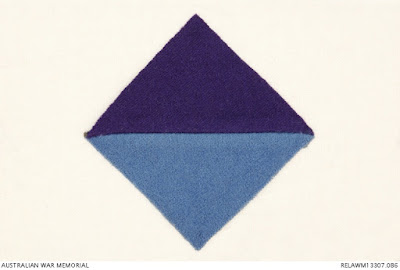 |
| D/DLI 7/531/1 Embroidered souvenir postcard |
The German Spring Offensive, masterminded by General Erich Ludendorff, drew to an end in July. The British and French armies had suffered heavy losses but had resisted the German attack, however, the German army was left exhausted and demoralised.
On 8 August 1918, the allied forces, including nine British divisions, four Canadian divisions, and five Australian divisions, and supported by 2,000 guns, 450 tanks and 1,900 aeroplanes, attacked east of Amiens in northern France. The German front line broke as the British advanced over 15 miles, inflicting on the German Army 30,000 casualties, including 13,000 prisoners. After this battle, the German Kaiser and his generals knew that the war was lost. General Ludendorff called it the 'black day of the German Army'.
This began the final 100 days of the war. The Allied armies launched attack after attack. Their casualties were heavy but this relentless pressure forced the German Army to retreat almost to the borders of Germany itself.
 | |||
| RELAWM13307.086 Colour patch of 26th Battalion, Australian Infantry Force, Australian War Memorial Creative Commons Non-Commercial License 3.0 |
Several men, originally from County Durham were in action on this opening day of the Battle of Amiens, serving with the Canadian and Australian forces. These included John Bailes, born in South Wingate, and John Edward Green, born in Sunderland, both serving with different battalions of the the Australian Infantry Force.
Another soldier was Henry Ellemor, born in Seaham Harbour in 1890. In 1911 he emigrated to Australia with his brother and worked as a miner until he enlisted as a private with 26th Battalion, Australian Infantry Force, in September 1915. Ellemor arrived in France a month into the Battle of the Somme and found himself fighting at Flers.
On 8 August 1918, Private Ellemor went into action at Amiens, where he was shot in the back and legs. He was evacuated to the 61st Casualty Clearing Station at Vigancourt, but sadly died of his wounds later that day.
Another soldier was Henry Ellemor, born in Seaham Harbour in 1890. In 1911 he emigrated to Australia with his brother and worked as a miner until he enlisted as a private with 26th Battalion, Australian Infantry Force, in September 1915. Ellemor arrived in France a month into the Battle of the Somme and found himself fighting at Flers.
On 8 August 1918, Private Ellemor went into action at Amiens, where he was shot in the back and legs. He was evacuated to the 61st Casualty Clearing Station at Vigancourt, but sadly died of his wounds later that day.
 |
| D/DLI 7/226/15 Amiens Cathedral, and bomb damage to nearby buildings c.1914-18 |

No comments:
Post a Comment